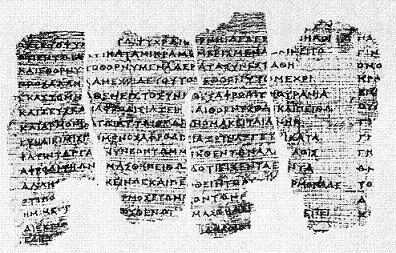ARABIC ETYMOLOGY////// إتيمولوجيا// HISTORY///MYTHOLOGY///LANGUAGES OF THE PAST///SCRIPTS OF THE PAST/// COSTAS LEVENTOPOULOS
Thursday 31 January 2013
Atom=اتوم
Atom=اتوم
ONLINE ETYMOLOGY DICTIONARY
atom (n.)
late 15c., as a hypothetical indivisible body, the building block of the universe, from Latin atomus (especially in Lucretius) "indivisible particle," from Greek atomos "uncut, unhewn; indivisible," from a- "not" + tomos "a cutting," from temnein "to cut" (see tome). An ancient term of philosophical speculation (in Leucippus, Democritus), revived 1805 by British chemist John Dalton. In late classical and medieval use also a unit of time, 22,560 to the hour. Atom bomb is from 1945 as both a noun and a verb; cf. Atomic./////////////////////////////////////////////////////////////////////////////////////////////////////////////////////////
WIKIPEDIA
Etymology
The name atom comes from the Greek ἄτομος (atomos, "indivisible") from ἀ- (a-, "not") and τέμνω (temnō, "I cut"),[3] which means uncuttable, or indivisible, something that cannot be divided further.[4] The concept of an atom as an indivisible component of matter was first proposed by early Indian and Greek philosophers.
Wednesday 30 January 2013
electron=الكترون
electron=الكترون
WIKIPEDIA
The ancient Greeks noticed that amber attracted small objects when rubbed with fur. Along with lightning, this phenomenon is one of humanity's earliest recorded experiences with electricity.[15] In his 1600 treatise De Magnete, the English scientist William Gilbert coined the New Latin term electricus, to refer to this property of attracting small objects after being rubbed.[16] Both electric and electricity are derived from the Latin ēlectrum (also the root of the alloy of the same name), which came from the Greek word for amber, ήλεκτρον (ēlektron).
/////////////////////////////////////////////////////////////////////////////////////////////////////////////////////////////////////////////////////////////////////////
Thales of Miletus
is often credited with being the first systematic philosopher of the Western world. He was the first to reject supernatural explanations and seek reasons behind events. To prove the value of this understanding of the world he used his logic and evidence to predict a good crop of olives and, buying up olive presses, was able to corner the market in oil and make a fortune. As well as devising several geometric theories (which allowed him to measure the height of the pyramids from the ground) Thales was also the first person to study electricity. It had been noticed that amber, when rubbed, attracted threads of fiber to it. It was this static electricity which Thales’ studied. When the negative particle of the atom was named it was called the electron, after the Greek for amber – elektron.
Monday 28 January 2013
Ancient Macedonian language
-->
Ancient Macedonian was the
language of the ancient
Macedonians. It was spoken in the kingdom of Macedon
during the 1st millennium BC and it belongs to the Indo-European
group of languages. It gradually fell out of use during the 4th
century BC, marginalized by Koine
Greek, the lingua franca of the Hellenistic
period.[1]
The volume of the surviving public and private inscriptions indicate that there was no other written language in ancient Macedonia but Greek,[2] and recent epigraphic discoveries suggest that ancient Macedonian was a variety of the Northwestern Greek dialects.[3]
WIKIPEDIA
The volume of the surviving public and private inscriptions indicate that there was no other written language in ancient Macedonia but Greek,[2] and recent epigraphic discoveries suggest that ancient Macedonian was a variety of the Northwestern Greek dialects.[3]
The Pella
curse tablet (Greek katadesmos)
P.S. See also
http://www.livius.org/maa-mam/macedonia/macedonia.html
P.S. See also
http://www.livius.org/maa-mam/macedonia/macedonia.html
Saturday 19 January 2013
Derveni papyrus
From Wikipedia, the free encyclopedia
Jump to: navigation, search
The Derveni papyrus is an ancient Greek papyrus roll that was found in 1962. It is a philosophical treatise that is an allegorical commentary on an Orphic poem, a theogony concerning the birth of the gods, produced in the circle of the philosopher Anaxagoras
in the second half of the 5th century BC, making it "the most important
new piece of evidence about Greek philosophy and religion to come to
light since the Renaissance" (Janko 2005). It dates to around 340 BC,
during the reign of Philip II of Macedon, making it Europe's oldest surviving manuscript.[1][2] It was finally published in 2006.Style of writing
The text of the papyrus contains a mix of dialects. It is mainly a mixture of Attic and Ionic Greek; however it contains a few Doric forms, which need further explanation. Sometimes the same word appears in different dialectal forms e.g. cμικρό-, μικρό; ὄντα, ἐόντα; νιν for μιν etc.[5]http://en.wikipedia.org/wiki/Derveni_papyrus
THE PAPYRUS OF DERVENI
Thessaloniki, Archaeological Museum, from 4.4.98
A unique model of writing in antiquity, the "Papyrus of Derveni", is being exposed with other findings of the same excavation. The papyrus roll was found carbonized among the remains of the funeral pyre upon the slabs of Derveni Tomb A. It is probably the single one had been found in Greece and the script is dated to approximately the third quarter of the fourth century B.C. From scores and scraps, mostly tiny, it has been possible to reconstruct 26 columns of writing, of which only the upper part survives. After an account of funeral rites and eschatological beliefs, the main part of the text consists of a prose allegorical-philosophical interpretation of a theogonic poem written in dactylic hexameters and ascribed in antiquity to the mythical poet Orpheus. The unknown author seems to have composed the book at the close of the fifth century B.C. His language abounds with Ionic elements, but this does not speak necessarily for Ionic origins, since Ionic was the dialect typical for scientific prose. He seems well conversant with Ionic philosophy and the likeliest candidate seems to be the Athenian mantis Euthyphron.
http://books.google.gr/books?id=5HaKQFeYSBEC&pg=PA56&redir_esc=y#v=onepage&q&f=false
http://www.metafysiko.gr/forum/archive/index.php/t-1336.html
Subscribe to:
Posts (Atom)


